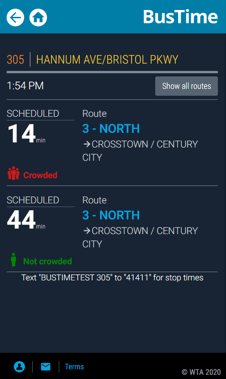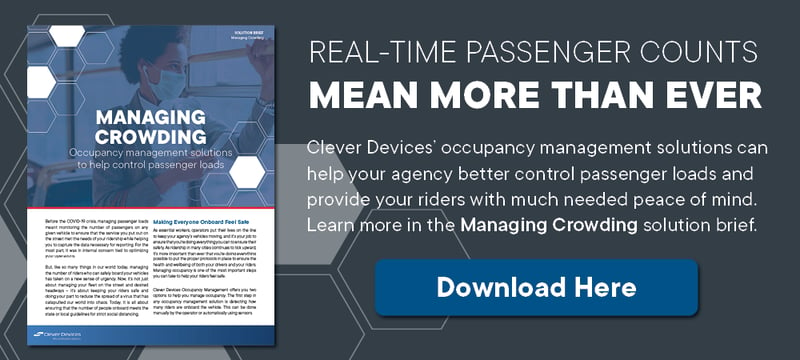When COVID-19 began to spread like wildfire across North America, public transportation quickly came to a grinding halt. With non-essential workers sent home to work remotely indefinitely, the kitchen table became the de facto workspace leaving only those essential workers on the front line needing public transit’s essential service.
According to a Transitcenter report, many essential workers (36% of them) rely on public transportation to get to work. During the pandemic’s dark days, many larger cities reported that those essential workers felt safer on a bus than they did on the subway or in private ride-share vehicles. In New York City, both during the earliest days of the pandemic and during the summer when the city slowly began to reopen, bus ridership beat subway ridership for the first time since the city started keeping those records over fifty years ago.
So the question is, how do you keep those for whom bus ridership is a lifeline safe while putting plans and technology in place to encourage others to safely return to transit when their employers call them back to the office?
While it was initially thought that riding transit dramatically increased the risks of contracting COVID-19, recent reports seem to indicate otherwise. Around the world, studies have failed to connect major COVID-19 clusters to transit meaningfully. The Atlantic recently summarized research done in Paris and Austria in a piece entitled “Fear of Public Transit Got Ahead of the Evidence.” The article suggests that as long as social distancing and mask-wearing are practiced, riding public transit posed no more significant threat than other activities where people gather.
Communicating Crowding Information to Ensure Social Distancing
 The CDC recommends that transit riders stay at least 6 feet from people not in their households and skip a row of seats between riders. This translates to capacity reductions of between 30-50%. With fewer seats available, the potential for crowding is real – particularly as more workers begin heading back into the office. One way to help alleviate both the crowding and the frustration and anxiety that comes with it is to communicate occupancy levels in real time.
The CDC recommends that transit riders stay at least 6 feet from people not in their households and skip a row of seats between riders. This translates to capacity reductions of between 30-50%. With fewer seats available, the potential for crowding is real – particularly as more workers begin heading back into the office. One way to help alleviate both the crowding and the frustration and anxiety that comes with it is to communicate occupancy levels in real time.
When you let your riders know in advance if their preferred bus has space for them to board safely, you’re helping them manage their journey more efficiently and safely. A rider can choose to forgo boarding a bus nearing capacity, preferring instead to wait for the next vehicle they can see may have more space available. The anxiety of getting on a crowded bus or, worse, waiting for a bus only to find it so crowded they can’t get on is alleviated.
Communicate Crowding Information with BusTime
With BusTime’s new responsive website, you can inform riders of how crowded or empty a vehicle is. They can follow along on the real-time map to track occupancy levels to better plan their trip to ensure proper social distancing. Riders get information in real-time about occupancy levels letting them know if the vehicle is crowded, is getting crowded, or has plenty of room available.
Addressing Today’s Riders – Planning for What Happens Next
While this pandemic doesn’t seem to be slowing down anytime soon, a vaccine is forthcoming, bringing with it the hope for a brighter future and an end to this madness. While our lives will never indeed be the same, things will begin to normalize at some point. People will start to emerge from their home offices and make their way back into their workplaces in some capacity. With that, transit ridership will rise.
Until then, our essential workers depend on public buses to get them to the critical jobs that keep our healthcare systems up and running and our economy afloat. Transit providers must do everything they can to make riding transit safe and reliable for those who have continued to do their challenging jobs in the face of such insurmountable adversity.
